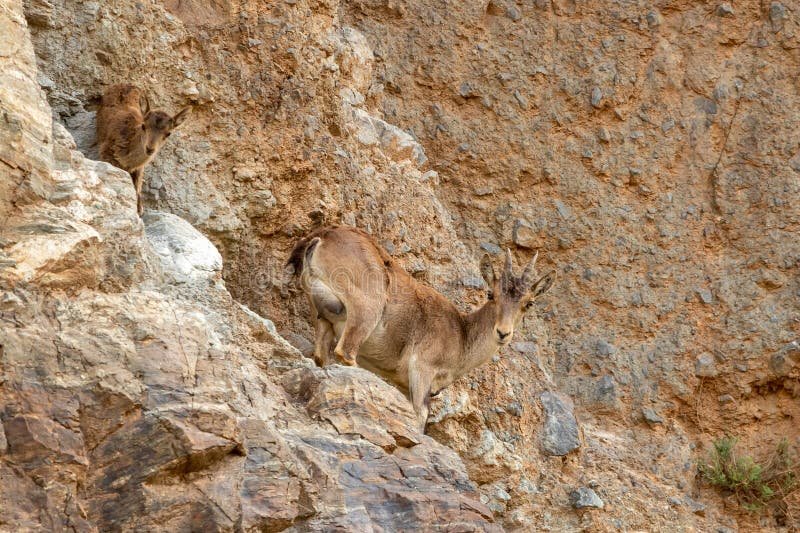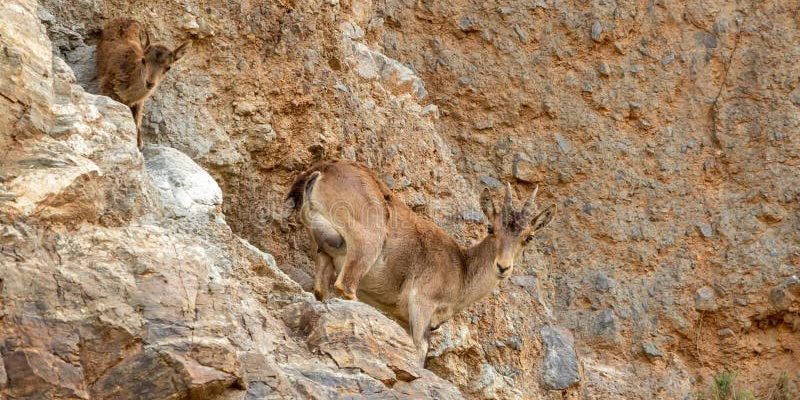
When ibex give birth, they do so in a secluded spot, often high up in the mountains where predators are fewer. This choice isn’t just for scenic views; it’s a protective strategy to ensure their young have the best chance of surviving in a harsh environment. In this article, we’ll dig deeper into how ibex raise their young, exploring the different stages of a kid’s life and uncovering the fascinating behaviors of these remarkable animals.
The Birth of an Ibex Kid
When an ibex mom is ready to give birth, she searches for a safe, hidden area, usually on steep cliffs or rocky outcrops. The first moments after birth are crucial. A newborn ibex kid is already pretty much ready for action; within a few short hours, they can stand and walk. It’s like being born into a boot camp—no time for cuddles; survival is key.
Once the kid arrives, the mother invests her energy into keeping her little one safe and nurturing them. It’s a bit like watching a protective parent at a playground, always keeping a close eye to ensure their kid is out of harm’s way. The mom will lick her baby to stimulate its body and encourage bonding. This first contact is incredibly important for both the baby and the mother to establish a strong connection.
First Weeks: Learning the Ropes
In the first few weeks, ibex kids remain close to their mothers. They learn to recognize her and follow her around. It’s a fascinating dynamic because ibex kids are naturally curious and eager to explore their surroundings. As they venture out, mothers are right there, guiding and teaching them the ropes about their new world. Honestly, it’s kind of heartwarming to think about a mom showing her kid how to forage for the best grass or find the safest path among the rocky slopes.
During this stage, ibex kids also start developing their physical skills. They practice jumping and climbing, activities that are crucial for their survival. Watching an ibex kid gallop alongside its mother is like witnessing a toddler trying to keep up with their parent in a busy street—lots of energy, a bit of stumbling, but plenty of determination.
Learning to Forage
As they grow, ibex kids begin to explore their surroundings more independently, although they are still under their mother’s watchful eye. Here’s the thing: ibex are herbivores, which means they rely heavily on what nature offers them. Young ibex learn to forage for tasty plants, grasses, and leaves, building a diet that is essential for their growth.
Mothers will lead their young to different grazing spots, teaching them which plants are safe to eat and which to avoid. It’s like a treasure hunt where the treasures are healthy snacks! They learn to recognize edible greenery while steering clear of anything toxic, which is crucial for their survival in the wild.
Social Structure and Play
You might be wondering how ibex kids fit into the larger community. They are social animals and grow up in herds, guided by their mothers. Interactions with other young ibex are critical for their development. Playtime among kids is more than just fun; it’s also essential for learning important social skills.
During play, young ibex engage in mock battles and racing, which helps them build strength and agility. Think of it as a game of tag—exciting and energizing while teaching them how to navigate relationships with their peers. The lessons learned during these playful interactions prepare them for life as adults in the herd.
Motherly Care and Protection
Throughout the early months, a mother ibex’s protective instincts are in full gear. She doesn’t just keep her kid physically safe; she also teaches them about the dangers that lurk in the wild—predators like wolves or eagles. When danger approaches, mothers often guide their young to safe spots, showcasing their skills in both nurturing and teaching.
An ibex mother is incredibly aware of her surroundings, like a guardian angel with her eyes always peeled for threats. If she detects danger, she’ll instinctively lead her kid away from the harm and towards safety. It’s a captivating dance of instinct and intelligence, ensuring the survival of her young.
Growing Up: Transition to Independence
As ibex kids mature, they gradually become more independent. Around 5 to 6 months old, they start to spend more time away from their mothers, forming bonds with other young members of the herd. It’s a natural progression, sort of like when kids start school and learn to navigate the world away from their parents.
During this phase, they develop their climbing skills even further. Learning to navigate rocky terrain alone is essential for their survival as adults. The combination of natural instincts and lessons they’ve learned from their mothers equips them for their future lives in the wild. Eventually, these kids will take their place in the herd, continuing the cycle of life for future generations.
The Importance of Conservation
Understanding how ibex raise their young highlights the importance of protecting their habitats. As climate change and human expansion threaten their environments, conservation efforts become crucial. Every ibex kid represents the future of their species, and we must ensure they have a safe place to grow up.
Conservationists work hard to create protected areas and promote awareness about the significance of these magnificent animals. It’s essential to support initiatives that help maintain their habitats so that future generations of ibex can thrive just like today’s kids. By safeguarding their natural world, we pave the way for the next generation of ibex to learn, grow, and soar on those rocky cliffs.
In conclusion, ibex are not just fascinating to observe; their parenting and social behaviors offer a window into the complexities of nature. From their birth in secluded areas to the lessons they learn about foraging and socializing, ibex kids grow up in a vibrant, dynamic world. By appreciating and protecting these magnificent animals, we ensure their legacy continues in the wild. So next time you think of ibex, remember the incredible journey from kid to adult, and the important role each one plays in their ecosystem.

